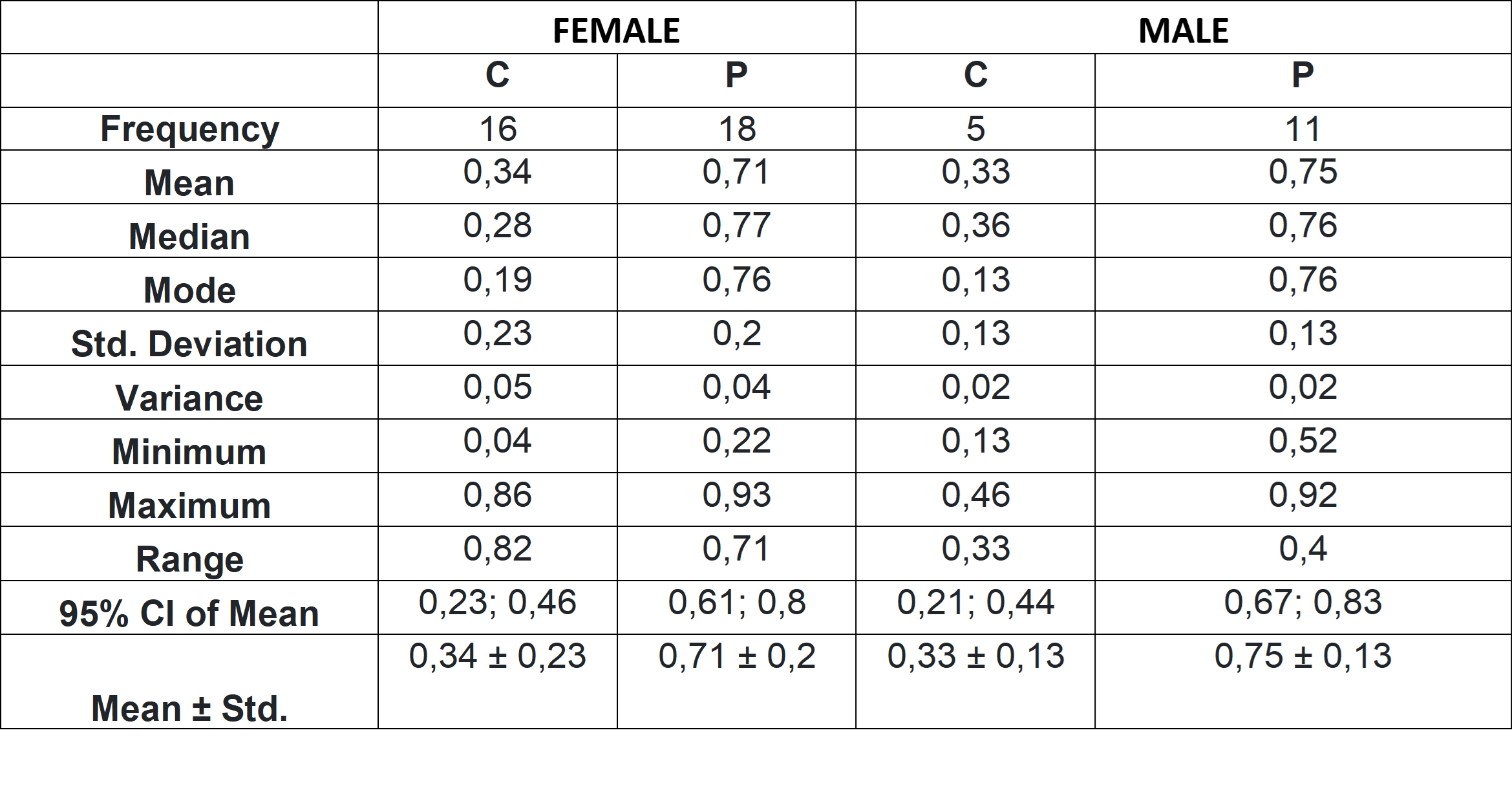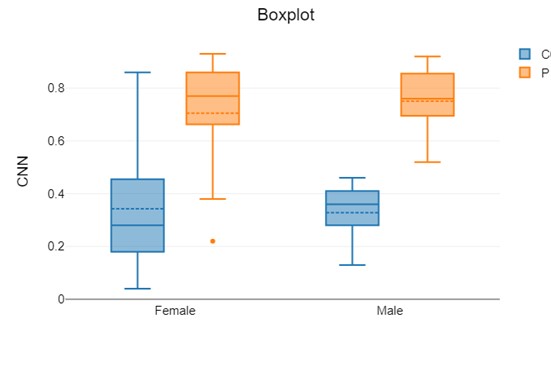Category: Technology
Objective: The aim of this part the clinical study was to obtain better understanding of the relation of efficiency AI-based screening diagnositics service for Parkinson’s disease (PD) by voice and gender of tested population. The method of the service is convolutional neural network (CNN), trained with more than 1000 unique audiorecords of voices of PD patients vs healthy volunteers (50/50%).
Background: Recently Solana-Lavalle et al. (2021) shown that different factors are associated with PD detection according to gender: in women high-frequency voice content is the most significant functional information to assist PD detection, while low-frequency content assists PD detection in men better [1]. Neurobiology studies with the analysis of structural brain imaging also confirmed that affected by PD brain regions are different between men and women [2]. Moreover, men and women display a changing characteristic in their voices as they get older [3]. Here we represent our clinical experience of AI-based service usage and its metrics.
Method: In the cohort clinical study 50 patients were included in a continuous manner. Every patient was assessed by the experienced neurologist and the diagnosis for “PD” with Hoehn and Yahr staging (group P) or “non-PD” (control group C) was made in every case according to MDS clinical criteria for PD [5]. The clinical trial was performed in January 2024 on the base of Republican Consultative and Diagnostics Center for Movement Disorders (Kazan, Russia). After the clinician’s assessment the digital diagnostics tool one was made. The trained CNN output was “possible PD” (counted probability of 0.5 and higher) and “non-PD” (counted probability less than 0.5). From the sample were excluded patients with atypical and other types of parkinsonism and with disorders associated with speech disturbances. The statistical analysis was performed with DATAtab [6].
Results: General characteristics of the evaluated population are presented in the Table 1.
The graphical distribution of the AI-based results depending on gender and group is shown on the Fig.1
Conclusion: AI-based voice diagnostics via trained CNN shows good results both in women and men, but the reason of the variance of prediction in female patients requires additional investigation.
General characteristics of evaluated population
Boxplot of the result depending on gender
References: 1. Gabriel Solana-Lavalle, Roberto Rosas-Romero. Analysis of voice as an assisting tool for detection of Parkinson’s disease and its subsequent clinical interpretation // Biomedical Signal Processing and Control, Volume 66, 2021, 1746-8094 p.
2. Yadav S. K. et al. Gender-based analysis of cortical thickness and structural connectivity in Parkinson’s disease //Journal of neurology. – 2016. – Т. 263. – С. 2308-2318.
3. Tsanas A. Accurate telemonitoring of Parkinson’s disease symptom severity using nonlinear speech signal processing and statistical machine learning. Doctoral Dissertation, Oxford University, UK. 2012.
4. Postuma R. B. et al. MDS clinical diagnostic criteria for Parkinson’s disease //Movement disorders. – 2015. – Т. 30. – №. 12. – С. 1591-1601.
5. DATAtab Team (2024). DATAtab: Online Statistics Calculator. DATAtab e.U. Graz, Austria. URL https://datatab.net
To cite this abstract in AMA style:
D. Khasanova, I. Khasanov, G. Ilina, Z. Zalyalova. Gender specificity in AI-Based Screening Diagnostics of Parkinson’s Disease (Brainphone Project) [abstract]. Mov Disord. 2024; 39 (suppl 1). https://www.mdsabstracts.org/abstract/gender-specificity-in-ai-based-screening-diagnostics-of-parkinsons-disease-brainphone-project/. Accessed December 9, 2025.« Back to 2024 International Congress
MDS Abstracts - https://www.mdsabstracts.org/abstract/gender-specificity-in-ai-based-screening-diagnostics-of-parkinsons-disease-brainphone-project/


